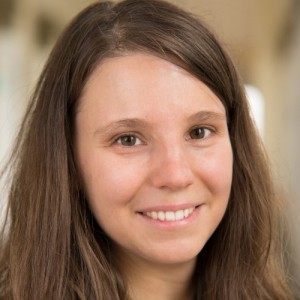
Decomposing large unitaries into multimode devices of arbitrary size
C. Arends, L. Wolf, J. Meinecke, S. Barkhofen, T. Weich, T. J. Bartley
Physical Review Research 6 (1), L012043 (2024).
Decomposing complex unitary evolution into a series of constituent components is a cornerstone of practical quantum information processing. While the decomposition of an n x n unitary into a product of 2 x 2 subunitaries (which can for example be realized by beam splitters and phase shifters in linear optics) is well established, we show how for any m > 2 this decomposition can be generalized into a product of m x m subunitaries (which can then be realized by a more complex device acting on m modes). If the cost associated with building each m x m multimode device is less than constructing with m(m-1)/2 individual 2 x 2 devices, we show that the decomposition of large unitaries into m x m submatrices is more resource efficient and exhibits a higher tolerance to errors, than its 2 x 2 counterpart. This allows larger -scale unitaries to be constructed with lower errors, which is necessary for various tasks, not least boson sampling, the quantum Fourier transform, and quantum simulations.

Valid and efficient entanglement verification with finite copies of a quantum state
P. Cieslinski, J. Dziewior, L. Knips, W. Klobus, J. Meinecke, T. Paterek, H. Weinfurter, W. Laskowski
Npj Quantum Information 10 (1), 14 (2024).
Detecting entanglement in multipartite quantum states is an inherently probabilistic process, typically with a few measured samples. The level of confidence in entanglement detection quantifies the scheme's validity via the probability that the signal comes from a separable state, offering a meaningful figure of merit for big datasets. Yet, with limited samples, avoiding experimental data misinterpretations requires considering not only the probabilities concerning separable states but also the probability that the signal came from an entangled state, i.e. the detection scheme's efficiency. We demonstrate this explicitly and apply a general method to optimize both the validity and the efficiency in small data sets providing examples using at most 20 state copies. The method is based on an analytical model of finite statistics effects on correlation functions which takes into account both a Frequentist as well as a Bayesian approach and is applicable to arbitrary entanglement witnesses.

Cooperation and dependencies in multipartite systems
W. Klobus, M. Miller, M. Pandit, R. Ganardi, L. Knips, J. Dziewior, J. Meinecke, H. Weinfurter, W. Laskowski, T. Paterek
New Journal of Physics 23 (6), 63057 (2021).
We propose an information-theoretic quantifier for the advantage gained from cooperation that captures the degree of dependency between subsystems of a global system. The quantifier is distinct from measures of multipartite correlations despite sharing many properties with them. It is directly computable for classical as well as quantum systems and reduces to comparing the respective conditional mutual information between any two subsystems. Exemplarily we show the benefits of using the new quantifier for symmetric quantum secret sharing. We also prove an inequality characterizing the lack of monotonicity of conditional mutual information under local operations and provide intuitive understanding for it. This underlines the distinction between the multipartite dependence measure introduced here and multipartite correlations.

Implementing graph-theoretic quantum algorithms on a silicon photonic quantum walk processor
X. G. Qiang, Y. Z. Wang, S. C. Xue, R. Y. Ge, L. F. Chen, Y. W. Liu, A. Q. Huang, X. Fu, P. Xu, T. Yi, F. F. Xu, M. T. Deng, J. B. Wang, J. D. A. Meinecke, J. C. F. Matthews, X. L. Cai, X. J. Yang, J. J. Wu
Science Advances 7 (9), eabb8375 (2021).
Applications of quantum walks can depend on the number, exchange symmetry and indistinguishability of the particles involved, and the underlying graph structures where they move. Here, we show that silicon photonics, by exploiting an entanglement-driven scheme, can realize quantum walks with full control over all these properties in one device. The device we realize implements entangled two-photon quantum walks on any five-vertex graph, with continuously tunable particle exchange symmetry and indistinguishability. We show how this simulates single-particle walks on larger graphs, with size and geometry controlled by tuning the properties of the composite quantum walkers. We apply the device to quantum walk algorithms for searching vertices in graphs and testing for graph isomorphisms. In doing so, we implement up to 100 sampled time steps of quantum walk evolution on each of 292 different graphs. This opens the way to large-scale, programmable quantum walk processors for classically intractable applications.

Multipartite entanglement analysis from random correlations
L. Knips, J. Dziewior, W. Klobus, W. Laskowski, T. Paterek, P. J. Shadbolt, H. Weinfurter, J. D. A. Meinecke
Npj Quantum Information 6 (1), 51 (2020).
Quantum entanglement is usually revealed via a well aligned, carefully chosen set of measurements. Yet, under a number of experimental conditions, for example in communication within multiparty quantum networks, noise along the channels or fluctuating orientations of reference frames may ruin the quality of the distributed states. Here, we show that even for strong fluctuations one can still gain detailed information about the state and its entanglement using random measurements. Correlations between all or subsets of the measurement outcomes and especially their distributions provide information about the entanglement structure of a state. We analytically derive an entanglement criterion for two-qubit states and provide strong numerical evidence for witnessing genuine multipartite entanglement of three and four qubits. Our methods take the purity of the states into account and are based on only the second moments of measured correlations. Extended features of this theory are demonstrated experimentally with four photonic qubits. As long as the rate of entanglement generation is sufficiently high compared to the speed of the fluctuations, this method overcomes any type and strength of localized unitary noise.
